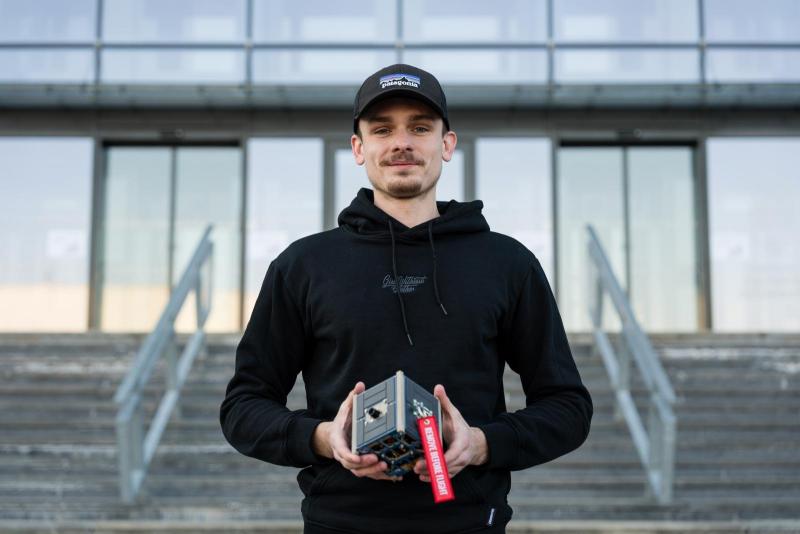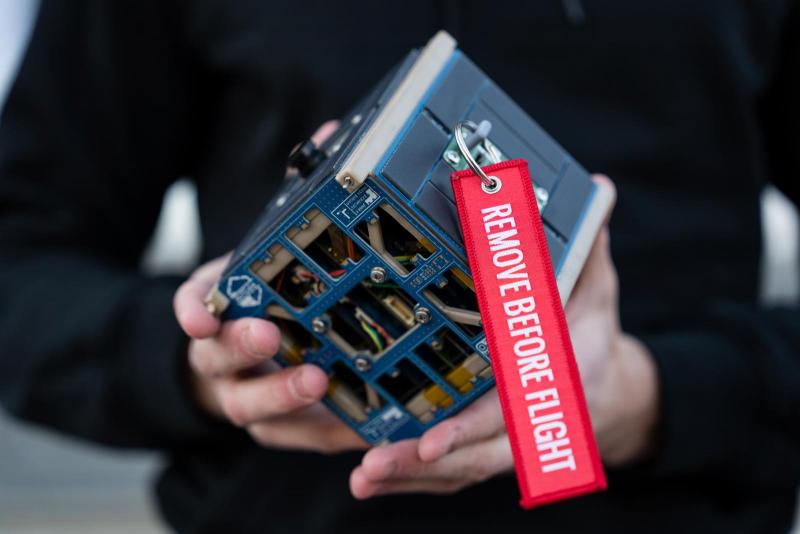Ideas and discoveries
Young scientists want to use Cubesat to photograph the solar eclipse from the space

After two years of work, doctoral students from BUT managed to complete a test "mini-satellite", the so-called Cubesat. Part of the development was also the search for the mission for which the device will be used. The choice fell on observing the solar corona during an eclipse, directly in the space. The work of young scientists would thus nicely complement the activities of mathematician Miloslav Druckmüller, known for his unique images of the solar corona. The University of Hawaii is also interested in collaborating on further research.
On the table in front of the young researcher Václav Lazar there is lying a 10 x 10 centimetre cube with a distinctive red sign "Remove before flight". It is actually a small satellite of the Cubesat type. It was Lazar who, for the past two years, was at the head of a team of doctoral students from BUT who decided to build their own "minisatellite". “We have a finished test piece that we know has functional subsystems developed for the mission we designed. We knew from the beginning that this particular piece would not fly into space, we were more interested in touching the topic of Cubesats and finding out what we could do," Lazar says.

Cubesat should move at an altitude of 400 to 600 kilometres above the earth, where the images of the Sun's disk hidden behind the Moon would not be disturbed by the influence of the atmosphere. "Cubesat will be equipped with a high-resolution camera capable of capturing images in the visible part of the spectrum. It would send the obtained data to Earth, and thanks to observations in the upper layers of the atmosphere, we do not have to deal with the permeability of wavelengths or the scattering of light, which is different down on earth," Lazar describes.
I believe it is realistic to launch our own Cubesat into space within five years.
The Cubesat would fly into a pre-calculated orbit during the mission, where it would take pictures of the eclipse at the exact location at the given time. "We took it quite broad and using the algorithm we calculated about fifty orbits for total solar eclipses starting this year for the next ten to fifteen years ahead," Lazar says.
The student Cubesat team "BUTCube", as the doctoral students called the small satellite, consisted of Václav Lazar from the Institute of Aerospace Engineering and two of his colleagues from the Faculty of Mechanical Engineering - Jaroslav Bartoněk also from the Institute of Aerospace Engineering and Tomáš Láznička from the Institute of Physical Engineering - who participated in the design, construction and testing. Two other members of the team - Štěpán Rydlo and Petr Malaník - are studying at the Faculty of Information Technologies. They worked on hardware and software. With the results of two years of work, the young scientists succeeded both in professional journals and at international conferences.

Václav Lazar believes that it will not be long before he will be able to tear off the red "Remove before flight" tag from "his" small satellite. "That's exactly what I like about Cubesats: compared to other space projects, for example classic satellites, the development is relatively fast and you have the opportunity to complete the entire mission. I believe it is realistic for us to launch our own Cubesat into space within five years," Lazar concludes.
Device is being developed at strojLAB that students hope will help them succeed in a prestigious biotechnology competition
ARGO underwater: Prototype of student submarine on display at IDET Fair
Women from BUT who move the world of science and technology
Doctoral students in engineering study the behaviour of the circulatory system. Neural networks also help them
Martin Cígler: The biggest obstacle to faster a development of it is the lack of people